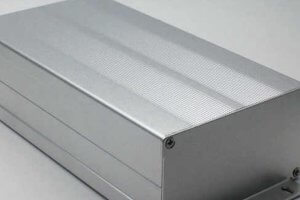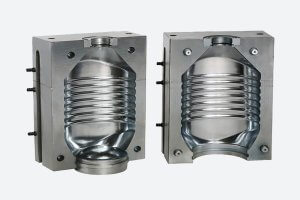In the field of CNC machining, achieving the desired mechanical and physical properties often hinges on effective heat treatment. For wrought aluminum alloys, which are extensively used due to their excellent strength-to-weight ratio and corrosion resistance, heat treatment processes are critical. These processes enhance their workability, mechanical strength, and durability. Let’s explore the various heat treatment methods for wrought aluminum alloys and how they influence CNC machined parts.
What is Heat Treatment?
Heat treatment is a process that involves heating and cooling metals in a controlled manner to alter their physical and mechanical properties without changing their shapes. This method is essential for improving material performance and achieving specific properties required for different applications.
Categories of Heat Treatment for Wrought Aluminum Alloys
The heat treatment of wrought aluminum alloys can be classified into several categories based on the purpose and the changes in the microstructure during the process. Here are the main types:
- Homogenization Annealing
- Recrystallization Annealing
- Solution Heat Treatment (Quenching)
- Aging (Natural and Artificial)
- Stress Relief Annealing
- Deformation Heat Treatment
Homogenization Annealing
Homogenization annealing is applied to cast ingots to eliminate chemical and structural inconsistencies. The ingots are heated to temperatures close to the melting point and held for an extended period. This process allows alloying elements to diffuse uniformly, improving the ingot’s plasticity and making it suitable for subsequent deformation processes.
Key Characteristics:
- Temperature: Close to the melting point
- Purpose: Eliminate chemical and structural inconsistencies
- Result: Improved plasticity and workability
Typical Homogenization Annealing Conditions for Common Alloys:
| Alloy | Temperature (°C) | Holding Time (hours) | Cooling Rate |
|---|---|---|---|
| 2024 | 490 – 510 | 10 – 12 | Furnace Cool |
| 6061 | 560 – 580 | 6 – 8 | Furnace Cool |
| 7075 | 460 – 480 | 12 – 14 | Furnace Cool |
Recrystallization Annealing
Recrystallization annealing is used to restore the ductility of cold-worked aluminum alloys. There are two main types: normal recrystallization annealing and phase-change recrystallization annealing.
- Normal Recrystallization Annealing:
- Purpose: Eliminate internal stresses and restore ductility by allowing new grains to form.
- Process: Heating the alloy to a temperature where recrystallization occurs, followed by controlled cooling.
- Result: Reduced strength but increased ductility.
- Phase-Change Recrystallization Annealing:
- Purpose: Achieve a specific microstructure with desired mechanical properties.
- Process: Heating above the phase transformation temperature and controlled cooling.
- Result: Desired microstructure and mechanical properties through reversible phase changes.
Typical Applications:
- Intermediate Annealing: Between cold working steps to restore ductility.
- Final Annealing: To achieve the desired mechanical properties before final machining.
Typical Recrystallization Annealing Conditions:
| Alloy | Temperature (°C) | Holding Time (minutes) | Cooling Method |
|---|---|---|---|
| 1050 | 300 – 350 | 30 – 60 | Air Cool |
| 3003 | 350 – 400 | 30 – 60 | Air Cool |
| 5052 | 300 – 350 | 30 – 60 | Air Cool |
Solution Heat Treatment (Quenching)
Solution heat treatment, also known as quenching, involves heating the alloy to a high temperature to dissolve alloying elements into a solid solution. The alloy is then rapidly cooled to retain these elements in solution.
Key Characteristics:
- Temperature: High, specific to the alloy
- Purpose: Create a supersaturated solid solution
- Process: Rapid cooling (quenching) to retain alloying elements
- Result: Improved strength and hardness after subsequent aging
Typical Solution Heat Treatment Conditions:
| Alloy | Temperature (°C) | Holding Time (minutes) | Quenching Medium |
|---|---|---|---|
| 2024 | 490 – 510 | 10 – 20 | Water |
| 6061 | 530 – 550 | 10 – 20 | Water |
| 7075 | 460 – 480 | 20 – 30 | Water |
Aging
Aging is the process that follows solution heat treatment and involves holding the alloy at a specific temperature to allow the precipitates to form, which strengthens the material. There are two types of aging:
- Natural Aging:
- Process: Occurs at room temperature.
- Result: Slow precipitation, suitable for certain alloys.
- Artificial Aging (Precipitation Hardening):
- Process: Performed at elevated temperatures.
- Result: Faster precipitation, leading to increased strength.
Typical Temperatures for Aging:
| Alloy | Natural Aging (Days) | Artificial Aging Temperature (°C) | Holding Time (hours) |
|---|---|---|---|
| 2024 | 4 – 10 | 190 – 200 | 8 – 12 |
| 6061 | 4 – 10 | 160 – 180 | 8 – 12 |
| 7075 | 4 – 10 | 120 – 130 | 24 |
Stress Relief Annealing
Stress relief annealing is used to reduce residual stresses in aluminum parts that result from machining or other fabrication processes. This process involves heating the alloy to a lower temperature than recrystallization annealing and then cooling it slowly.
Key Characteristics:
- Temperature: Lower than recrystallization temperature
- Purpose: Reduce residual stresses without significant changes in mechanical properties
- Result: Improved dimensional stability and reduced risk of stress corrosion cracking
Typical Stress Relief Annealing Conditions:
| Alloy | Temperature (°C) | Holding Time (minutes) | Cooling Method |
|---|---|---|---|
| 2024 | 300 – 350 | 30 – 60 | Air Cool |
| 6061 | 250 – 300 | 30 – 60 | Air Cool |
| 7075 | 200 – 250 | 30 – 60 | Air Cool |
Deformation Heat Treatment
Deformation heat treatment, also known as thermomechanical processing, combines plastic deformation with heat treatment to refine the microstructure and improve the mechanical properties of aluminum alloys.
Key Characteristics:
- Process: Plastic deformation followed by heat treatment
- Purpose: Enhance strength, toughness, and corrosion resistance
- Result: Improved mechanical properties through refined microstructure
Typical Deformation Heat Treatment Conditions:
| Alloy | Deformation Temperature (°C) | Holding Time (minutes) | Cooling Method |
|---|---|---|---|
| 2024 | 400 – 450 | 10 – 20 | Air Cool |
| 6061 | 450 – 500 | 10 – 20 | Air Cool |
| 7075 | 350 – 400 | 10 – 20 | Air Cool |
Practical Applications in CNC Machining
In CNC machining, precise control over the heat treatment process is essential to achieve the desired properties in the final product. Here are some practical applications:
- Aerospace Components: High strength and lightweight parts achieved through solution heat treatment and aging.
- Automotive Parts: Improved fatigue resistance and durability through stress relief annealing.
- Consumer Electronics: Enhanced electrical conductivity and mechanical stability through homogenization annealing and recrystallization annealing.
Understanding the various heat treatment processes for wrought aluminum alloys is crucial for optimizing their performance in CNC machining parts. By carefully selecting and controlling these processes, manufacturers can enhance the mechanical properties, durability, and overall quality of aluminum components. This knowledge not only improves product performance but also contributes to more efficient and cost-effective manufacturing practices.
Other Articles You Might Enjoy
- What is Heat Treatment in CNC Machining
Heat treatment is one of the most common process used by CNC machining manufacturer. It can change the material properties of your metal. This means that the metal's strength and…
- CNC Machining for Aerospace Applications: Titanium vs. Aluminum Alloys
CNC Machining in Aerospace: An Introduction and Overview Computer Numerical Control (CNC) machining is a manufacturing process that utilizes software-directed machines to fabricate complex parts with high accuracy and repeatability.…
- In the field of CNC machining Which materials require heat treatment?
Introduction to CNC Machining and the Role of Heat Treatment CNC (Computer Numerical Control) machining stands as a cornerstone in modern manufacturing, enabling the precision crafting of parts with minimal…
- Material Considerations for High-Speed CNC Machining: Aluminum Alloys vs. Titanium
Introduction: High-Speed CNC Machining and Material Considerations In the world of modern manufacturing, High-Speed CNC (Computer Numerical Control) machining plays a pivotal role in producing precision parts at fast turnaround…
- CNC Machining Materials: Acrylic vs. Polycarbonate for Transparent Components
CNC Machining: An Introduction and the Importance of Material Type Computer Numerical Control (CNC) machining is a manufacturing process where pre-programmed computer software dictates the movement of factory tools and…
- The Impact of Grain Structure on CNC Machining: Forged vs. Cast Aluminum Alloys
Introduction: CNC Machining and Aluminum Alloys In the realm of Computer Numerical Control (CNC) machining, aluminum alloys are extensively utilized due to their favorable characteristics such as lightweight, high strength…









